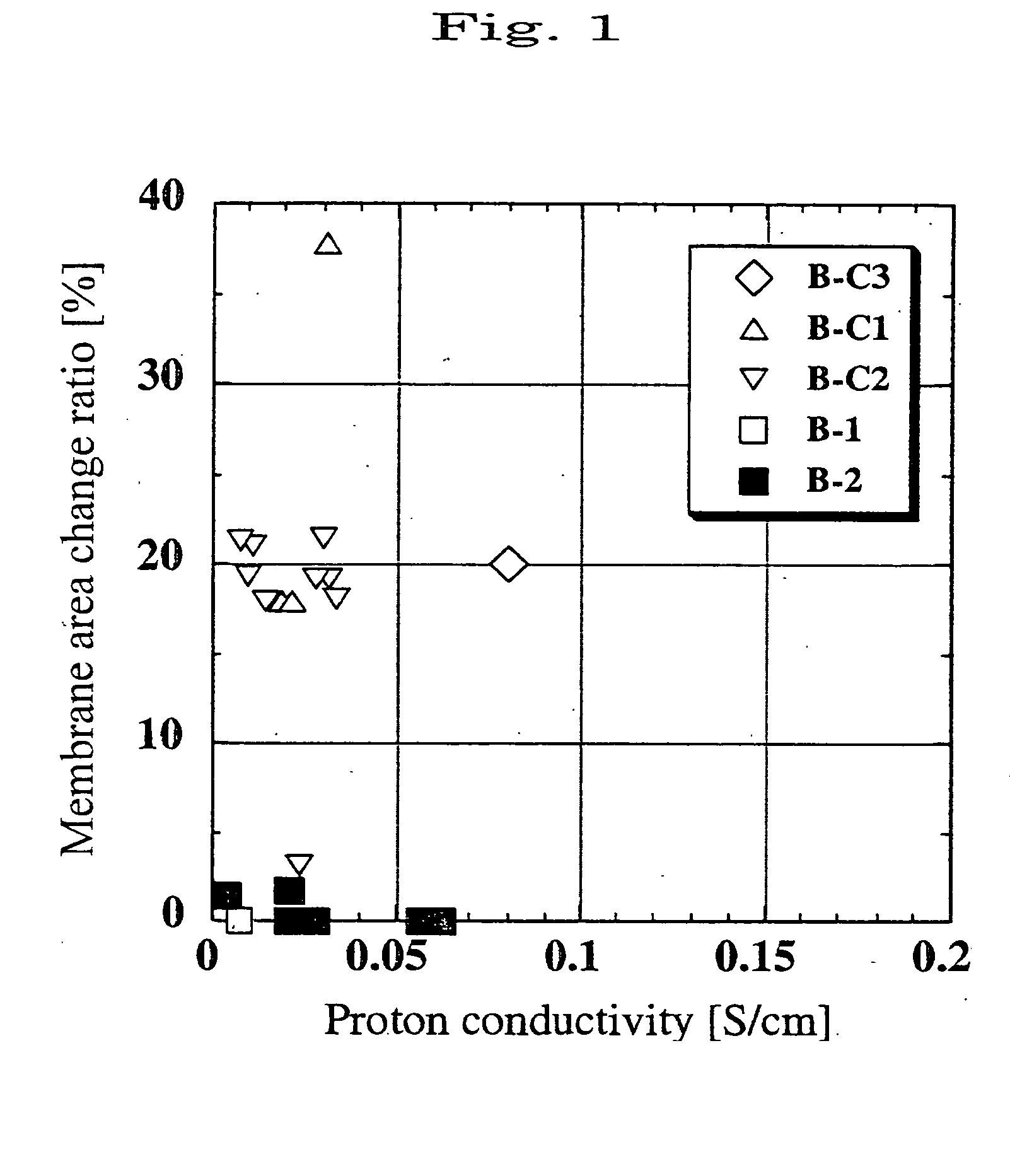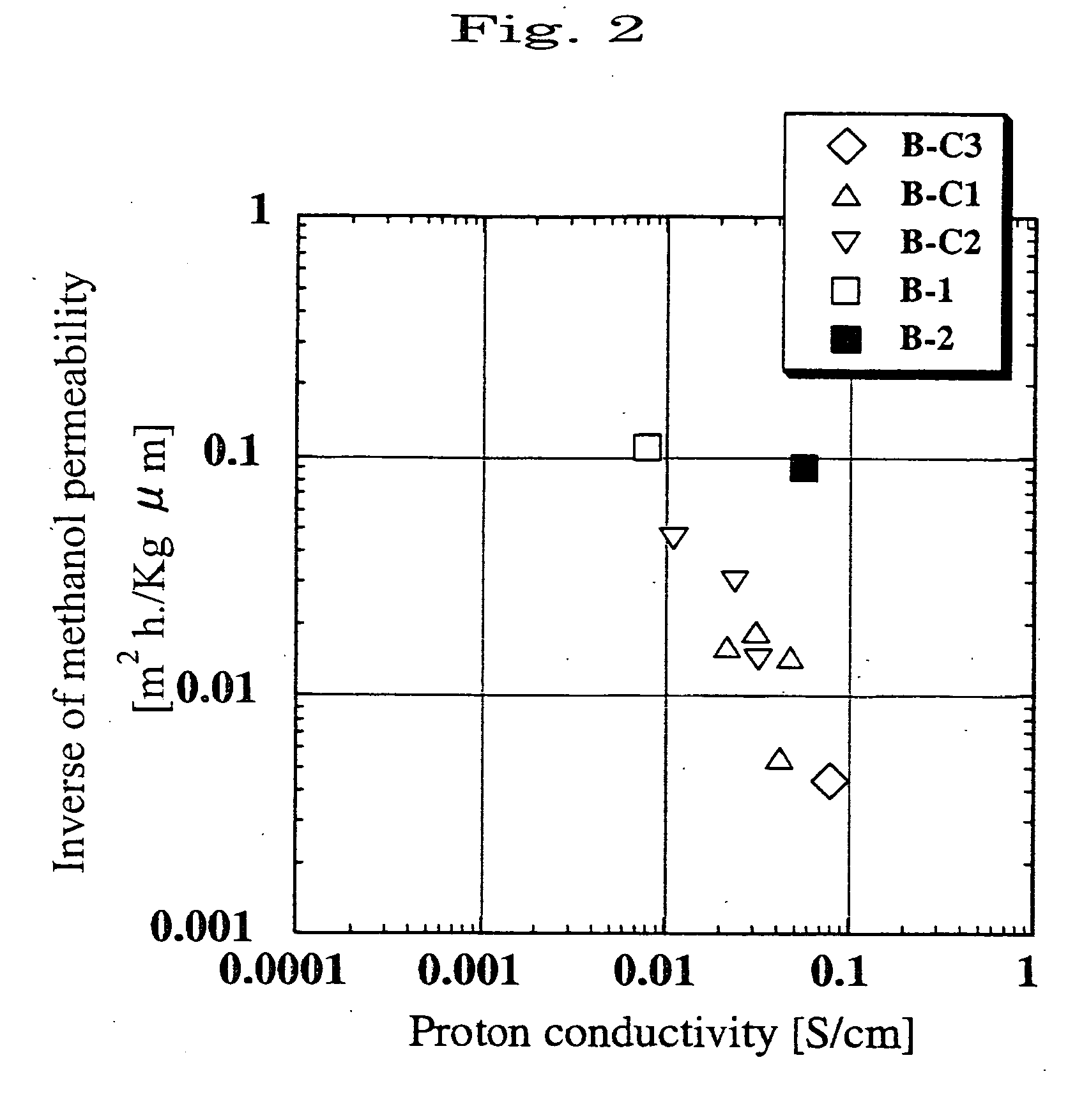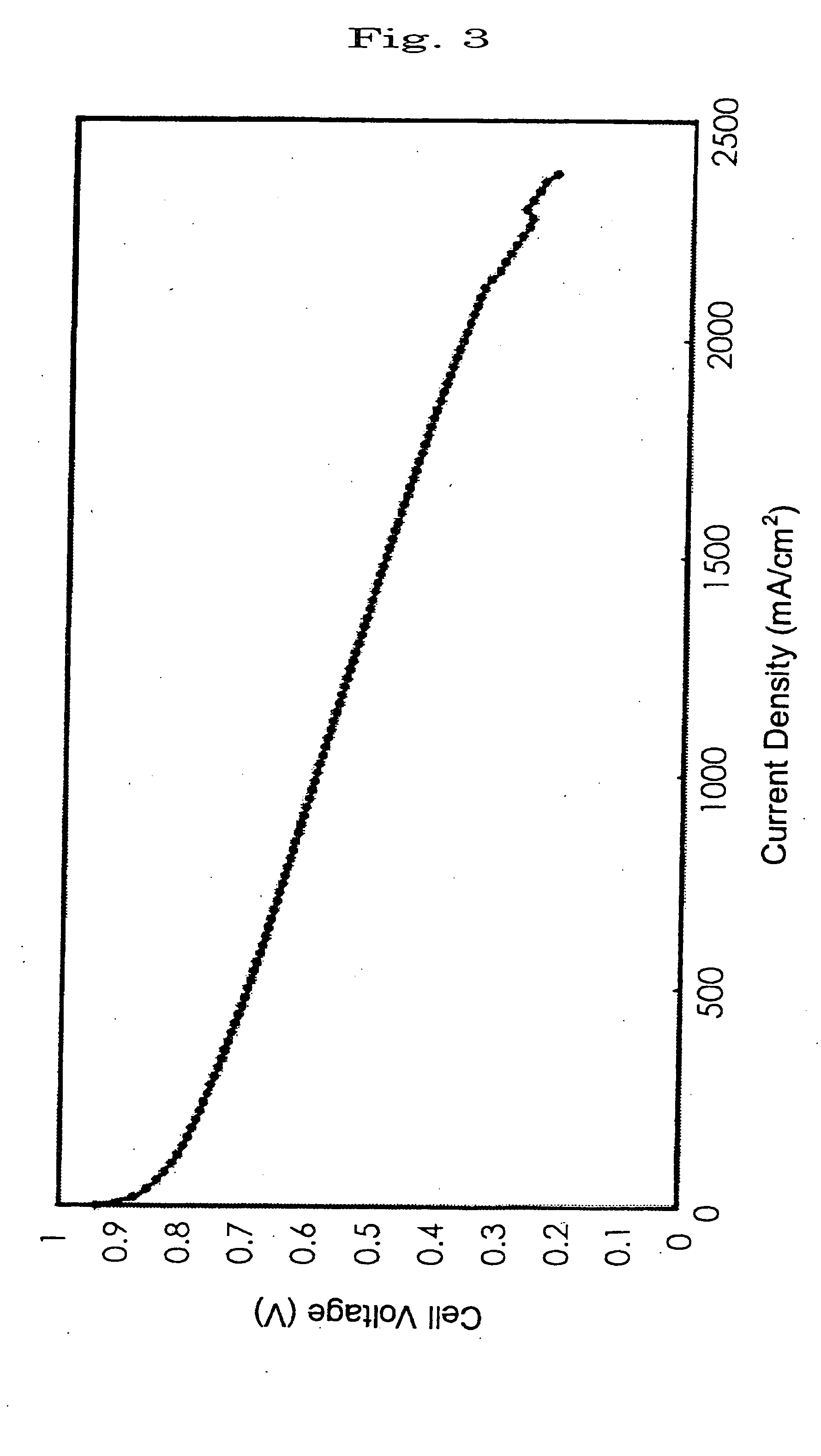Electrolyte film and solid polymer fuel cell using the same
a solid polymer fuel cell and electrolyte technology, applied in the field of electrolyte membrane and fuel cell using electrolyte membrane, can solve the problems of deteriorating size stability, electrolyte membrane, many of them are inferior in any one of the heat resistance, chemical stability, dynamic physical properties, etc., and achieve no or reduced surface area and proton conductivity
- Summary
- Abstract
- Description
- Claims
- Application Information
AI Technical Summary
Benefits of technology
Problems solved by technology
Method used
Image
Examples
examples
[0210] Hereinafter, the present invention will be described more in details along With Examples and Comparative Examples, however the scope of the invention is not limited by these Examples. In Examples and Comparative. Examples, % stands for % by weight andpart(s) stands for part(s) byweight unless stated otherwise.
example i
Preparation Example of Substrate I-1
[0211] S-BPDA as a tetracarboxylic acid component and DADE as a diamine component were used. A mixture of them at 0.998 mole ratio of DADE to s-BPDA was dissolved in NMP such that total of the monomer components was a concentration of 9.8% by weight, and polymerized at 40° C. for 15 hours, to obtain a polyimide precursor. The solution viscosity of the polyimide precursor solution was 1,000 poise.
[0212] The resulting polyimide precursor solution was poured into a specularly polished SUS plate such that a thickness of the solution was about 150 μm. The solution was covered with a finely porous membrane made of an olefin, as a solvent substitution rate adjustment material, having a gas permeability of 550 s / 100 cc (UP-3025, manufactured by Ube Industries, Ltd.) in a wrinkle-free manner. The resulting laminate was immersed in methanol for 7 minutes and solvent replacement was carried out through the solvent substitution rate adjustment material to p...
example i-1
[0220] The porous polyimide membrane A-1 obtained in the above-mentioned manner was used as a porous substrate to form an electrolyte membrane. As a first polymer to fill pores of the membrane with, the following AAVS type polymer was used to obtain a membrane B-1.
[0221] An aqueous solution containing 79 mol % of acrylic acid, 20 mol % of sodium vinylsulfonate, and 1 mol % of divinylbenzene as a cross-linking agent was prepared such that concentration of acrylic acid, sodium vinylsulfonate and divinylbenzene was 70 wt %. A water-soluble azo type initiator; 2,2′-azobis(2-amidinopropane)dihydrochloride (hereinafter, abbreviated as “V-50”); was added to the solution at a ratio of 1% by mole to 100% by mole of the total of the acrylic acid and vinylsulfonate, to obtain a solution. The substrate A-1 was immersed in the solution, and visible light was radiated to the substrate for 6 minutes. Then, the substrate was heated at 50° C. for 18 hours in an oven.
[0222] And then, the excess pol...
PUM
| Property | Measurement | Unit |
|---|---|---|
| Temperature | aaaaa | aaaaa |
| Temperature | aaaaa | aaaaa |
| Temperature | aaaaa | aaaaa |
Abstract
Description
Claims
Application Information
 Login to View More
Login to View More - R&D
- Intellectual Property
- Life Sciences
- Materials
- Tech Scout
- Unparalleled Data Quality
- Higher Quality Content
- 60% Fewer Hallucinations
Browse by: Latest US Patents, China's latest patents, Technical Efficacy Thesaurus, Application Domain, Technology Topic, Popular Technical Reports.
© 2025 PatSnap. All rights reserved.Legal|Privacy policy|Modern Slavery Act Transparency Statement|Sitemap|About US| Contact US: help@patsnap.com



